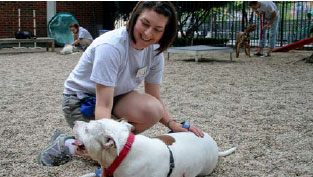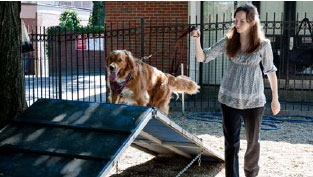
Collaborative for Shelter Dogs is committed to improving the welfare and eventual placement of homeless dogs everywhere.
| WHAT'S NEW? | Last week, Seana Dowling-Guyer, MS, CSD's Associate Director, attended the New England Federation of Humane Societies' Annual Training Conference to talk about pet owner support programs, community programs, and making decisions about programs which programs to develop and maintain. She discussed the use of a strategic decision-making matrix organizations can use when making these decisions. Seana's talk was partly based on the chapter she co-authored with Dr. Erin Doyle on safety net programs in the ASPCA's Animal Behavior for Shelter Veterinarians and Staff, 2nd ed. So many great sessions and so good to see so many familiar faces while meeting new people! |
Education & Resources
Research you can use in your shelter or rescue and in your community to support pets and pet ownership.
Training & Enrichment
Providing dogs with physical and mental stimulation is a critical factor for maintaining their behavioral health. Enrichment activities will keep shelter dogs busy, so they are less likely to do the things we don't want them to do, while basic training makes dogs more adoptable.


